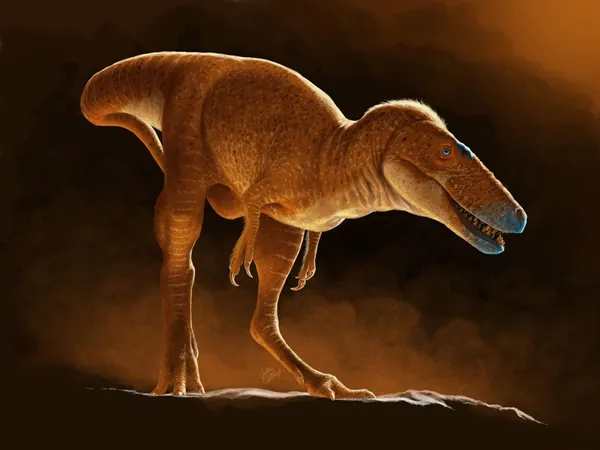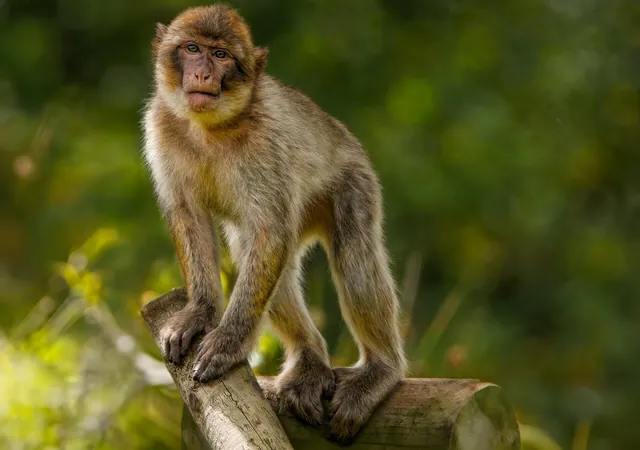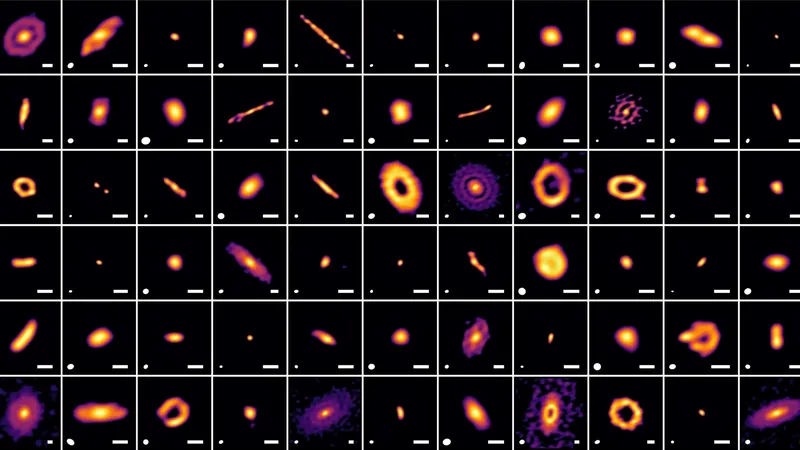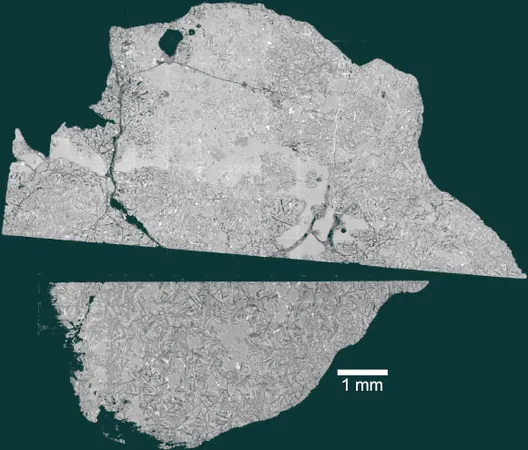
Unveiling the Dragon Prince: A Key Ancestor of T. rex Discovered in Mongolia
2025-06-13
Author: William
A Revolutionary Discovery in Dinosaur Evolution
In a groundbreaking revelation, scientists have unearthed a mid-sized dinosaur from Mongolia that illuminates the evolutionary journey of the formidable Tyrannosaurus rex. The newly identified species, named Khankhuuluu mongoliensis—translated to "Dragon Prince" in Mongolian—stands as a pivotal ancestor in the tyrannosaur lineage, reshaping our understanding of how one of Earth’s most notorious predators evolved.
An Agile Predator from the Past
Dating back about 86 million years to the Cretaceous Period, Khankhuuluu mongoliensis predates T. rex by approximately 20 million years. This bipedal hunter spans around 13 feet (4 meters) in length and weighs about 1,600 pounds (750 kilograms), showcasing a smaller and more nimble physique compared to its colossal descendant, the T. rex, which could grow over 40 feet (12.3 meters) long.
A Unique Feeding Strategy
Unlike the enormous T. rex, Khankhuuluu was likely a swift predator, targeting smaller creatures such as bird-like dinosaurs, including oviraptorosaurs and ornithomimosaurs. Its elongated snout was equipped with sharp teeth akin to steak knives, perfect for slicing through its prey.
Insights from the Name
Paleontologist Darla Zelenitsky from the University of Calgary highlighted the significance behind the species' name, stating, "We wanted to convey that Khankhuuluu was a small, early form that had not yet become a king; it was still a prince." This insight into nomenclature reflects the dinosaur's status as a foundational figure in tyrannosaur evolution.
A Historic Fossil Find
The discovery sprung from fossils belonging to two individuals excavated in Mongolia during the 1970s. A detailed analysis of these remains—including skull fragments, limbs, tails, and back bones—has now yielded a clearer picture of the evolution of tyrannosaurs than has ever existed.
Rewriting the Tyrannosaur Family Tree
What began as a new species discovery has resulted in researchers rewriting the family history of tyrannosaurs. Lead author Jared Voris, a doctoral student at the University of Calgary, expressed the significance of this finding, noting that prior to this, the relationships among various tyrannosaur species were poorly delineated.
Distinct Features of Khankhuuluu
While sharing many traits with its later descendants, Khankhuuluu lacked several definitive features of true tyrannosaurs. Notably, its hollow snout bone and the unique structure around its eyes differentiate it from later tyrannosaurs, marking it as an important transitional species.
Challenging Previous Theories
Historically, some paleontologists suggested that elongated-snouted tyrannosaurs like China’s Qianzhousaurus, dubbed "Pinocchio-rexes," were the evolutionary antecedents of the tyrannosaurs. However, Khankhuuluu’s anatomical traits imply a more intricate evolutionary history.
From Asia to North America and Beyond
According to Voris, the ancestors of tyrannosaurs likely emerged in Asia and migrated into North America about 85 million years ago, crossing a land bridge from Siberia to Alaska. There, they evolved into the massive apex predators we know as T. rex. Some of these tyrannosaurs later made their way back to Asia, leading to the emergence of species like Tarbosaurus and the famed Pinocchio-rexes.
Khankhuuluu: An Evolutionary Ancestor
Ultimately, T. rex ruled northwestern North America until a catastrophic asteroid impact 66 million years ago triggered a mass extinction. Zelenitsky aptly describes Khankhuuluu as a crucial ancestral link, stating, "Khankhuuluu was where it all started, but it was still only a distant ancestor of T. rex—more like a great-great-great uncle, if you will. Over a dozen tyrannosaur species evolved in the time between them."
A Major Piece in the Dinosaur Puzzle
The unveiling of Khankhuuluu mongoliensis serves as a vital missing link in our understanding of how agile, mid-sized predators gradually transitioned into some of the largest and most lethal meat-eaters to ever roam the planet.









 Brasil (PT)
Brasil (PT)
 Canada (EN)
Canada (EN)
 Chile (ES)
Chile (ES)
 Česko (CS)
Česko (CS)
 대한민국 (KO)
대한민국 (KO)
 España (ES)
España (ES)
 France (FR)
France (FR)
 Hong Kong (EN)
Hong Kong (EN)
 Italia (IT)
Italia (IT)
 日本 (JA)
日本 (JA)
 Magyarország (HU)
Magyarország (HU)
 Norge (NO)
Norge (NO)
 Polska (PL)
Polska (PL)
 Schweiz (DE)
Schweiz (DE)
 Singapore (EN)
Singapore (EN)
 Sverige (SV)
Sverige (SV)
 Suomi (FI)
Suomi (FI)
 Türkiye (TR)
Türkiye (TR)
 الإمارات العربية المتحدة (AR)
الإمارات العربية المتحدة (AR)